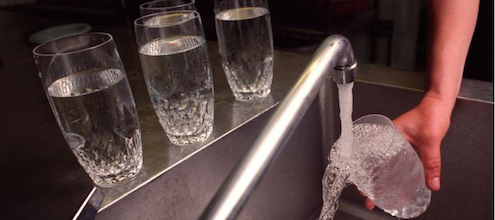
Conserving water in a thirsty world
The following is an excerpt from The Policy Opportunity of Our Generation: Ecofiscal Reform in Canada’s Provinces and Cities, published in Public Sector Digest, February 2015, and made available online January 15th. This is the second of a four-part blog series that highlights how ecofiscal policies can help cities and provinces conserve water, fight traffic and reduce waste.
“Whiskey is for drinking, water’s for fighting over,” Mark Twain wrote, foreshadowing one of the greatest challenges of the 21st century: an increasingly thirsty world. According to the UN, by 2025 1.8 billion people will be living in countries or regions with absolute water scarcity, and two-thirds of the world’s population could live under water stress conditions. This is already the case in Singapore, an island with a high population density and a supply of fresh water so limited that it is required to import a significant share of its water from Malaysia. With current water demand projected to double by 2060, the government needed to find innovative solutions to conserve water.
The solution: a revamp of Singapore’s water tariff system designed to recover costs associated with both water provision and waste-water handling, which also creates incentives for conservation. Starting in 1997, Singapore introduced a water billing structure with explicit line items for water and infrastructure use, highlighting the costs per unit of water used by households and businesses. The greater the consumption, the higher the cost. However, recognizing the regressive impacts of this policy on lower-income families, Singapore simultaneously introduced a quarterly sales-tax rebate reflecting water and electricity expenditures based on the number of rooms in a household. The results of this overall approach have been substantial: a 9% reduction in water consumption between 1994-2005, with further reductions projected by 2030.
The success of Singapore’s policy should not be surprising, at least not to anyone who thinks that consumers generally respond to price incentives. If you examine data from around the world, you see that countries in which water is priced more expensively are also countries where per capita consumption is lowest; in contrast, countries in which water’s price is very low (as in Canada) are countries where per capita water use is the highest (as in Canada).
Canada facing its own water problems
Of course, Canada is not Singapore: we are stewards of 20 percent of the world’s fresh water. However, the mythology of Canada’s water abundance is misleading. According to Environment Canada, only about 7 percent of Canada’s global water supply is “renewable” and more than half of that water drains northward into the Arctic Ocean and Hudson Bay. Given that 85 percent of our population lives along Canada’s southern border, our remaining supply of water is heavily used and over-stressed.
This fact is not lost on Canada’s cities and provinces, many of which have undertaken reviews of outdated water acts and municipal water management regimes. Canadian examples of water pricing demonstrate that this can be an effective strategy to address pressures here at home. Toronto provides potable water to over 3.3 million residences and businesses. The costs of infrastructure are significant, as are the concerns of meeting water demand in the context of a growing urban population. The city tackled these issues with an increase in water use pricing (from 6 to 10.8 percent over the last decade), which resulted in a 24 percent reduction in per capita residential water use.
The much smaller community of Tofino, a popular Vancouver Island getaway destination, also employed water pricing to address one if its greatest challenges: drastic seasonal population changes. In summer, the tiny village with a winter population of 2,000 expands to roughly 20,000. An acute water shortage in the summer of 2006 made Tofino’s water risk palpable. A new water-pricing regime has helped manage infrastructure costs and encourage conservation when it is needed most. For example, a seasonal surcharge doubles water rates in the summer months—when demand is the greatest and supply the lowest.
Despite these examples, and a handful of others, the reality is that the majority of Canadian municipalities do not employ user fees for water services, opting for a “flat rate structure”—a system that generally leads to higher water use. As cities and provinces continue to examine their water management regimes, there is a significant opportunity to make more and better use of ecofiscal water policies to help quench their thirst for sustainable infrastructure and conservation.
>>Read the next post on fighting traffic




Comments are closed.